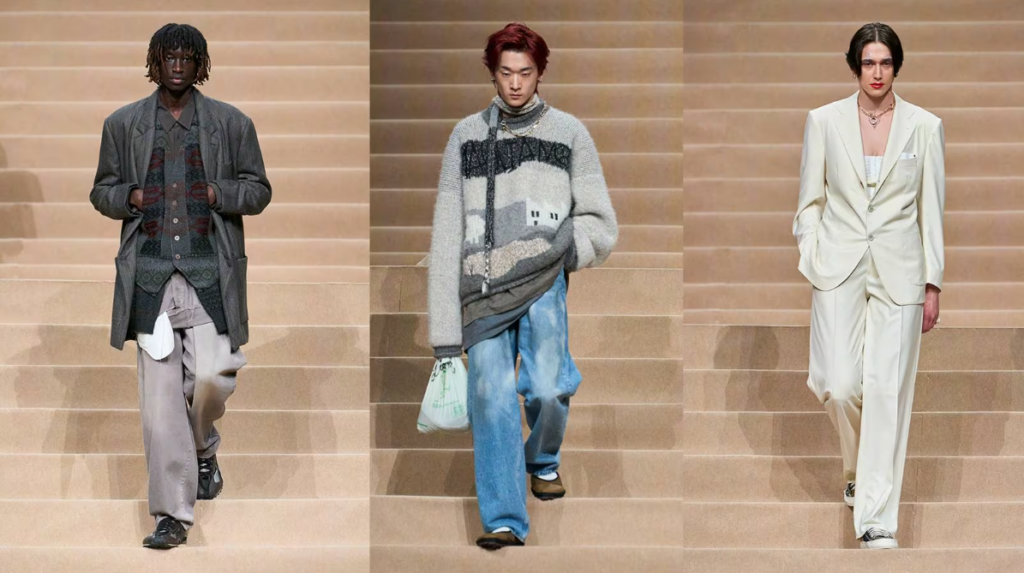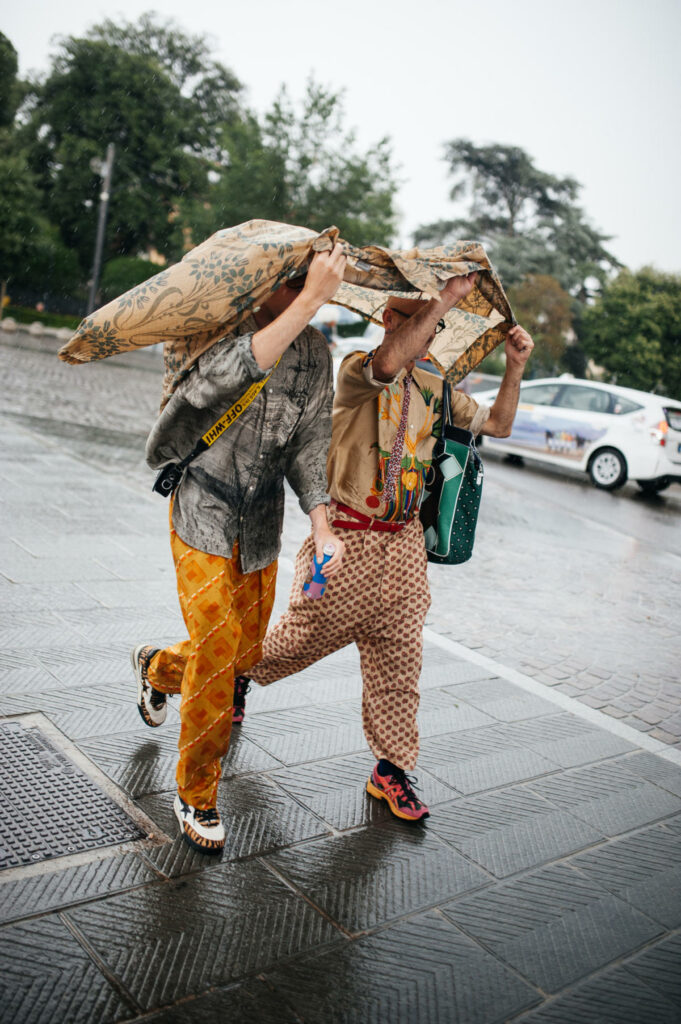
The cobbled streets of Florence once again resonated with the buzz of Pitti Uomo, the biannual menswear trade show renowned for its sartorial audacity and trendsetting spirit. This edition, however, offered a surprising shift. While innovation remained at the forefront, the runways pulsed with a renewed appreciation for classic fabrics and silhouettes, albeit reimagined with a playful twist. Think familiar tweed and corduroy reinterpreted in unexpected colors and unexpected cuts, tailoring infused with a dose of youthful exuberance, and heritage patterns reinvented with a contemporary edge.
Classics Reborn: Tweed, Corduroy, and More Take Center Stage
Tweed, that quintessential symbol of British heritage, transcended its traditional confines. We saw it reimagined in vibrant hues like emerald green and cherry red, adding a touch of playful energy to structured jackets and trousers. Corduroy, often associated with casual weekend wear, shed its laid-back persona, emerging in tailored suits and sharp trousers, proving its versatility and sartorial potential.
Other familiar fabrics like wool and flannel were also put to work, but with a modern twist. Think oversized silhouettes and relaxed cuts juxtaposed with sharp tailoring details, creating a unique balance between comfort and sophistication. It was a playful rebellion against the rigid confines of formalwear, a celebration of individuality and self-expression within the framework of classic elements.
Tailoring With a Wink: Unstructured Lines and Quirky Details
Tailoring remained a cornerstone of the Pitti Uomo experience, but with a newfound freedom. Gone were the days of perfectly pressed suits and pristine shirts. Instead, we saw unstructured jackets with relaxed shoulders, fluid trousers with cinched ankles, and playful details like contrasting stitching and unexpected pocket placements.
Even neckties, a symbol of formal attire, weren’t spared the playful touch. We saw them worn over t-shirts, knotted nonchalantly, or fashioned from unconventional materials like silk scarves or knitted fabrics. It was a reminder that even the most traditional elements of menswear can be reinterpreted with a touch of humor and whimsy.
Heritage Reimagined: Pattern Play and Cultural Influences
Heritage patterns and traditional motifs also made a comeback, but with a contemporary twist. Think classic houndstooth rendered in unexpected color combinations, tartan checks juxtaposed with floral prints, and paisley patterns reimagined in bold, abstract forms. Some designers even drew inspiration from cultural influences, incorporating ethnic motifs and traditional embroidery techniques into their collections.
This playful exploration of heritage offered a fresh perspective on familiar patterns, reminding us that the past is not a static entity, but rather a source of inspiration for future innovation. It was a celebration of cultural exchange and the power of fashion to bridge the gap between tradition and modernity.

Beyond the Runway: Sustainability and Inclusivity Take Hold
The renewed focus on classics at Pitti Uomo wasn’t purely aesthetic. It was also accompanied by a growing emphasis on sustainability and inclusivity. Many designers showcased eco-conscious practices, using recycled materials, upcycling vintage garments, and partnering with ethical manufacturers. We also saw a wider range of body types and ethnicities represented on the runways, reflecting a more inclusive and diverse vision of menswear.
A Return to Timeless Style with a Modern Twist
Pitti Uomo’s embrace of classic fabrics and silhouettes with a playful twist wasn’t simply a nostalgic ode to the past. It was a statement about the enduring power of timeless style, reimagined for a generation that values both comfort and individuality. It was a reminder that fashion can be both playful and sophisticated, rebellious and traditional, all at the same time.
As the curtains closed on another edition of Pitti Uomo, we were left with a sense of optimism and excitement. The future of menswear, it seems, lies in a harmonious blend of the familiar and the innovative, a celebration of heritage reinterpreted with a contemporary lens. It’s a future where classics remain relevant, but not static, where comfort and self-expression go hand in hand, and where sustainability and inclusivity are no longer afterthoughts, but essential elements of creating truly meaningful fashion.